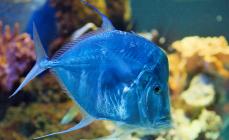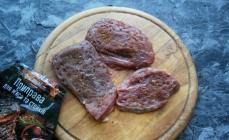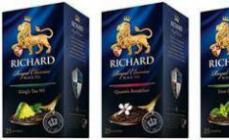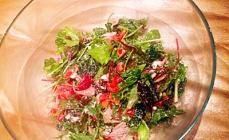Those who have a private house or cottage, and in addition - a large apple orchard, sometimes faced with a harvest problem, such that it is simply nowhere to do. Recycling of apples - the process is quite time-consuming, but delivering certain moral pleasure. After all, the realization that you will get out "live vitamins" will please any of us. What kind of methods of processing apples are in industrial and home conditions, for their own purposes and for sale - we will tell you in this article. And if you make juices for yourself and your loved ones, take advantage of some of our advice.
Recycling of apples at home
During and after harvesting, it must be processed correctly, with as much return as possible. The most promising options: juice, puree, jam or jam, dried fruits. Consider each of these methods separately.
Puree.
Recycling apples in puree is one of the most effective ways to save the product. This can be done with the help of a powerful electric meat grinder (or at a thin end manual, but then get ready to "swing muscles"). Before recycling apples, you need to properly prepare for this process. It is necessary to cut the fruit for four parts and free them from seeds.
Peel can not be removed. But if you want the mashed potature to be especially gentle, then clean the fruit. After you scrolled apples, it turns out a pasty mass. We add sugar from the calculation if apples of sweet varieties, one kilogram puree - shelter sugar. If the apples are sour, add more sugar: an apple kilogram is eight hundred sugar grams.
All thoroughly mix and boil in a large dishes on the smallest fire. After we ride in advance sterilized banks.
The juice
Recycling apples on juice is carried out in this way. By cutting fruit into four parts (manually, you can, with a special cutter) and freeing them from seeds, run them through the juicer. After pressing, it is joining the juice and bring to boil in a large container, but do not boil. Remove the foam, filter the juice (some lowered this process - they love unfiltered, with a shallow weighing pulp). We break into sterilized banks, ride. We put cool with the lids down, biting from above.
If the juice is disappeared
From one small apple orchard juice, it turns out quite a lot. If you do it for your own needs, and not for sale, you should not worry that the product wanders or disappears. From the missing, it would seem, juice can be prepared strong alcoholic beverages, such as apple vodka or Calvados. In the end, ordinary dry apple wine or cider. Recipes in abundance are present in culinary books. We give only a few of them.

Calvados
Perfect for the preparation of this drink, the fruits of late varieties are suitable. Even those that fell to earth from trees (only you need to cut rotten places). Further recycling of apples is carried out using a kitchen combine. It will quickly turn fruit into a homogeneous mass. Then in the dishes for fermentation poured one kilogram of the mezgi three liters of pure spring water and wine yeast (three or four days). Capacity fill in three quarters volume.
Several times a day, the mass must be mixed so that the mezga rose up. Withstand three days, we drag the liquid, the mezu is pressed. I walked for fermentation (it is necessary to put a water shutter on the bottle). The fermentation process takes about a month. Then carefully drain the fluid so that the sediment does not get to the bottom. Raw materials twice needed to overtake and clear in several ways.
Organization of production of juice
As a small business idea, juice production is quite promising and convenient. Technology is simple, and no high costs are required to organize the case. The mini cannery can be built with their own hands right in a private house. Wire employees - members of your family. And if you have a big garden at hand, then there is a possibility to earn good!

Natural product
Here is the main criterion - quality. Your trump card is a completely natural product (which is especially valued, for example, abroad). No need to use various taste additives and preservatives. Your juice should be natural and have the qualities that are not available at drinks purchased in supermarkets. On this opposition and the whole business should be built.
Mini production
Many doctors advise drinking daily natural juices. They increase immunity and saturate the organism necessary vitamins and amino acids. Your advantage - in the absence of high costs and investments at the primary stage of development. It is enough to have raw materials (apples themselves in sufficient quantities), simple apple processing equipment: a large good powerful food processor or / and a semi-industrial juicer, designed to process a large amount of fruits.
There will still be necessary: \u200b\u200bpackaging for cooking juice, banks for its rigging. This home line for the processing of apples, roughly speaking, fits in the usual summer cuisine - improvised industrial premises. Technologies - all known, folk. If an assistant is required, you can use one or more family members.
Raw
Best of all, if you have your own apple orchard. Then the problem of raw materials is solved very simply. If you just have a plot near the private house, then think about the fact that the trees can be planted. Just do not forget that they are before fruit, you need to grow old! You can buy raw materials from neighbors, for example (those who have big fruit Gardens) if your own material is not enough. It should also be remembered that from one kilogram of apples can be obtained at a maximum of 250 grams of juice. This, by the way, is one of the shortcomings of this business. If you decide the problem and find constant sources of raw materials, then good profits will always be provided for you.
Apple juice is called juice, which is squeezed out of fresh apples. The sweet taste gives it the presence of natural sugar in apples. Currently most apple juice Get industrial by pasteurization and aseptic packaging.
Apples are the most popular seed fruits that are used for canned food. These canned food are the most diverse: compotes, juices, jacket, nectars, etc. On the production of natural canned food with low levels of calories and attractive packaging is now oriented modern nutrition in the country and the world.
Technology manufacturing apple juice.
According to these Regulations, there are:
-Labe juice of direct spin (juices obtained from fresh or saved fresh apples with mechanical processing);
-The-high apple juice (get a direct spin, not cans, made in the presence of a consumer from fresh or stored fresh apples);
-Concentric apple juice (manufactured by the method of physical removal of water from juice to increase the amount of dry soluble substances in two or more times);
- diffusion apple juice (obtained by extracting extractive substances from fresh or dried apples with water, of which it is impossible to obtain mechanical processing). Apple juice obtained in this way, first concentrated, and then restore.
|
|
Similarly, a delivery, acceptance and storage of the components for the production of apple juice are carried out similarly with the manufacture of various types of canned food. The raw materials are carefully wash, then inspected to remove the fruits that were struck by pests, as well as rotten and other violations. In the production of apple juice, the main method of exposure to plant fabric is a mechanical crushing (grinding). But a very fine grinding can make a fabric with a solid mass, which will not be channels that are necessary to leak down the juice.
Pressing, centrifugation, diffusion and other methods extract juice from the mezgi apples. Pressing is the main method of producing juice from fruits. The juice is extracted due to the pressure on the mezdu.
Destruction of plant tissue pressure, crushing the biomembrane cell structure is not a pressing function. Its main function is the extrusion of juice, which was obtained from cells damaged by pre-processing. The pressing will not be applied to highlight juice from cells, but is used to release juice (liquid mezgi phase), which flows before pressing from destroyed cells. Preliminary processing Raw materials mainly affect the high yield of juice from fruits.
To achieve a more enjoyable taste, juices are shuffling (mixing). Can mix juices of two different species, juices of one type of apples or juices of apples containing a different amount of sugar and acid.
Organization of the production of juice from apples.
It should be noted that for small businesses, canned food is currently quite a convenient sphere. Due to very simple technology, cheapness (i.e. does not require significant investments and large areas for production), easy production organization (requires some technological equipment), light in the technical plan of production equipment (it can be done in simple conditions) A large number of small business representatives participates in this area.
Production of high-quality goods is the main criterion for successful growth and business development, for this I recommend that you read the article about . Taste additives do not need. Instead, you can mix the juices of different fruits, in different ways to mix them, make multifuctions, or even mix the juices at the request of the buyer and get a unique taste.
The price of a mini line for the production of apple juice by direct spinning begins from 1,000,000 rubles.
It should be noted that in mixes there are more vitamins and beneficial substances, as they complement each other. It follows that the mixtures of juices are more useful.
Business problem in this industry is that to produce large volumes of juice, you will need great amount fruit. For example, on the manufacture of 250 ml juice you will leave 1 kg of apples, and berries even more - from 1 kg - 50 ml of juice.
The idea of \u200b\u200bdeveloping a small business for the manufacture of natural juices can be tested to prepare juice from vegetables or. Vegetables contain such vitamins that have no anywhere or in fruit, nor in berries and are no less useful.
Production of direct spinning juice from its own apples. |
| Back | Forward - |
|
|
The apples are then reinforced and rinsed under the shower of a washing machine 5. Further, by Elevator 6, they are fed into the disk crusher 7. The resulting mezga enters the screw stream 8, where it is self-tek and with a minor submersion from the mezgo to 40% of the juice (instead of 60% With normal recycling). The amount of suspension in the juice in this case is several times less than in the juice obtained on the auger presses.
Pressed juice enters the collection 16, from which the plunger pump 17 is sent to the pipeline 24. The sparkling products are decanted, and it is applied to the piston pump 14 to the pasteurizer-cooler 23 for heating to a temperature of 80 ... 90 ° C and subsequent cooling to 25 ... 30 ° С.
For more efficient cooling, the juice is passed through the tubular cooler 22. With quick heating and cooling, protein substances coagulate, as a result, the clarification of the juice is improved during filtration.
Cooled juice under pressure first enters the collection 20, installed on the site 21, from there - gravity in the separator 19 for cleaning. When submitting gravity, the juice is better cleaned from the weighing. The purified juice is assembled into the collection 18, from which it is sent to the final purification into the filter press 28. The filtered juice is collected in the collection 29. Then the pump 14 is pumped into the tubular heater 30, where heats up to a temperature of 90 degrees C and is supplied to a double-distance cauldron 31 for Maintaining a constant temperature before the start of the package.
The bottles wash in the machine 43 and browsed through the screen 42. When leaving the washing machine, the bottle temperature should be at least 50 degrees C. To do this, equip a special barber 40: on both sides of the conveyor 41 mounted two-inch pipes 1.5 m long with bubbler, In which steam serve. Holes of bubblers on both sides are directed to the bottle body. The plot of the conveyor with bbusers is closed with a housing with an exhaust umbrella.
The hot bottles of the conveyor are fed to the casting AV-Tomato 32, then to the closure machine 33. The bottles of crown plugs with polyethylene liners, which are pre-3 ... 4 min are processed with sharp steam in the closet or hot water (85 ... 100 ° C) in a double-sleeved boiler.
After the capping of the bottle when driving through the pipeline 35 is checked on the defective machine 34. From the table drive 36 bottles are stacked in the basket 37 in three rows. Every row of bottles are shifted with a wooden grid. With the help of electro-telfer 38 baskets are installed in autoclave 39 for sterilization. Then they are unloaded to the drive table, are labeled, installed in boxes, sent to the warehouse or implemented.
The squeezes obtained on the flatter and containing up to 20% of the juice are fed into the screw bar 9. In this case, the protopectin is hydrolyzed and the pulp and seed cameras are ensured. In order for the product is not burned, it is heated to a temperature of 100 ... 110 "S. After scalding, the squeezes are fed to a single-stage universal spacer machine 10 (the diameter of the sieves 1 ... 1.2 mm). The wipe is going to the collection 15 From it, the pump 14 is sent to the second utility machine 25 (the diameter of from-vertices 0.6 ... 0.8 mm). Further, the product enters the vacuum apparatus 26 for the cooking jam or sulfitution.
The sugar required for cooking jammed is sieved on viburny 11, the desired amount of it on scales 13 is rested in the collection 12 and is supplied to the vacuum apparatus 26 in the puree. Ready to be packaged in banks or barrels with a capacity of 50 liters with polyethylene liners. If it is fusing in the cans with a capacity of 0.65 ... 1.0 l, then they are then sterilized in autoclaves. If the puree is designed to obtain a semi-finished product, then after the second wip, it is cooled in the cooking boilers 27, in the barrels with polyethylene liners, sulphide and sent for storage.
Juices are the most valuable component of fruits, berries and vegetables. They contain many water-soluble biologically active and easily disabled substances. Most juice has a pronounced therapeutic effect.
Juice is a liquid product obtained from high-quality ripe fresh or stored fresh due to the cooling of fruits and (or) vegetables intended for direct eating or for industrial processing.
The range of juices is extremely wide.
Juices depending on the production method can be direct spin and recovered; Depending on the production method - clarified, unrefined and juices with crumility (nectars); Depending on the composition - from one type of raw materials, two or more (bathed); Natural without additives and with additives (sugar or sugar substitutes, vitamins, minerals, acids, etc.). In addition, concentrated juices with an elevated content of soluble dry substances are produced.
Technology production of natural juices. The technological process of producing natural juices includes the following operations: preparation (sink, in some cases purification) and crushing of fruits and vegetable raw materials (its features), extraction of juice (on the flow and presses), cleaning it (filling) and lightening, filtering, packing, pasteurization.
Crushing of prepared fruit and vegetable raw materials. It should ensure the destruction of pulp cells at least 75%. Quince, apples, pears, rhubarb crushed on knife, gravy or disk crushers. Apples are crushed into particles of 2 ... 6 mm particles depending on the density of the fetus tissue and the presses used. The more denser the fabric, the smallest there must be particles of fruits.
Bone fruits (cherry, cherry, plum) are crushed on universal crushers. Crushing regulate so that the bones are not crushed. It is allowed to have destroyed bones in the mezage no more than 15% of its mass.
Berries of currant, gooseberry, lingonberries are crushed on roller or disk crushers. Mature strawberry berries, raspberries and blueberries can not be crushed.
To increase the release of juice when pressing the MEZU is pre-heated, treated with enzyme preparations or electric shock.
When the mezgi is heated to 70 ... 76 ° C, denaturation of proteins occurs and its spirits increases.
The treatment of mezgo enzyme preparations leads to hydrolysis of proteins, pectin compounds and starch, which also helps to increase the yield. The suspension of the enzyme preparation is made in the ezu of the seed fruits immediately after crushing, and in the ezgu of the bone - after adding water (10 ... 15% to the mass of the mezgi) and it is heated to 40 ... 45 ° C. The mezu with the drug is stirred and withstand 40 ... 60 min, depending on the type of raw material being processed and transmitted to pressing.
Pressing mezgi. To extract juice, the mezu fruits and berries is fed to the press of various systems.
To press apple mezgi on a batch press to increase the exit of juice and facilitate pressing, it is recommended to install poplers before press. The time of separation of juice in the flatter and pressing should not exceed 20 minutes to avoid significant oxidation and darkening of the mezgi and juice. The yield of juice in the flatter is up to 30%. When the pressure increases and the higher yield of the juice, it is enriched with suspension and its clarification will be difficult.
To increase the yoke yield when using screw presses, it is recommended to press apples after a screw press to be additionally pressing on a hydraulic, batch or basket press. The precipitate from the separator of coarse impurities is connected to the squeezes and pressed along with them.
The precipitate of pulp can be used as an additive (no more than 20%) to the apple puree during the cooking of the jacket or returned to the ezgu for repeated pressing.
The yield of juice depends on the quality of the original raw material, the preparation of the mezgie, the pressing method and is,%: from grapes 70 ... 80, apples 55 ... 80, cranberries 70 ... 80, cherries 60 ... 70, currant red 70 ... 80, black 55 ... 70.
Floating juice. The juice arising from under the press is filled through a sieve of stainless steel with a hole with a diameter of 0.75 mm or a caproic sieve to remove into juice when pressing pieces of mezgi, seeds and other impurities.
Further juice operations depend on which types of juice produce: clarified or unreasonable.
Lightening juice. Juices The lightes prepare from barberry, lingers, pears, cranberries, rowan, currant red, grapes, apples, etc.
You can brighten the juice immediately after it is made or later, cooking semi-finished products, preserving them and then lightening.
Lighten the juices by the following methods: pasta, enzyme preparations, gelatin with enzyme preparations or bentonite with gelatin and enzyme preparations, or silicon dioxide with gelatin and enzyme preparations, or heating.
Filtration. After clarification, juice is sent to filtration. Filtering on filters-presses are carried out at a pressure of 39.2 ... 157 kPa.
Facing juice. For fake juice, bottles or cans with a capacity of 0.2 ... 3 dm 3. Heated to 75 ... 78 ° C juice fusion and direct on pasteurization or sterilization.
Pasteurization of juice. Natural juice, with sugar, bathing pasteurize in banks with a capacity of 0.65 ... 1.0 DM according to the formula 10-20-20 min at 85 ° C and 118 kPa pressure.
It is allowed to preserve the juices by the method of hot bottling. In this case, the juice is heated to the heated container, the juice is heated to a temperature of 96 ... 98 ° C.
Restored juices from concentrated are produced in this order.
On electronic scales, the concentrate is weighed and according to the recipe in the long pasteurization bath is added to water. In it, concentrated juice is mixed with water. In order to remove the microflora present in the concentrate, pasteurization is carried out. Then, in a rotary pulsation unit operating on the basis of cavitation or a homogenizer, the mass is homogenization to produce a homogeneous mixture without lumps and inclusions.
Prepare the container. Then the prepared bottles come to install bottling, and then - on the line of vacuum capping.
Bottles with juice restored from the concentrate, after bottling there are inspection on a special screen, where unwanted inclusions in the liquid in the bottle are revealed, and part of the products are rejected. Then etiquette bottles. The mass fraction of soluble dry substances in direct pressed juices and in the reduced juice is shown in Table 8.3.
Bottles that have passed inspection control are coming to group packaging - in Termothunnel, where they are tightened into the stretch film, and they are sent to a temporary storage warehouse or to implement.
Progressive Received Technology for Harvesting Apple juice-use Microwave energy with a frequency of 2400 + 50 MHz for 2 ... 3.5 min. When processing whole washed fruit of apples, the temperature across the volume of the fetus reaches 80 ... 90 ° C, which ensures the inactivation of enzymes and prevents the oxidation of the obtained juice. The new technological treatment diagram of apples includes the following operations: washing, inspection, rinsing of fruits under shower, microwave-processing, flowing juice through a plotter, pressing (microwave drying of apple seats), filtering, microwave-paste of juice, packaging juice to prepared and Microwave-treated bottles, silence, storage. It allows you to receive not only juice with a natural taste, aroma and color, but also reduce its production time and dispose of waste (drying of the seabeing). Under the considered scheme, the juices are tomato, plum, apricot, etc. The effect of cavitation during the processing of integer fruits on the microwave installation makes it possible to exclude their crushing.
The deadlines for the storage of juices depend on the container, in which they are placed: in the glasstress (light) - 2 years; in glassware (dark) - 1 year; in metal container - 1 year; in aluminum tubes - 1 year; In consumer packaging from combined materials based on aluminum foil and paper (cardboard) of the aseptic and hot bottles - 1 year.
For liquid aseptic canning products, combination materials based on foil, paper, cardboard and polymer, such as polyethylene / paper / polyethylene / aluminum foil / polyethylene, are widely used.
In consumer packaging from combined film materials, the juices store 9 months, and in bottles of polymeric materials - 1 year.








